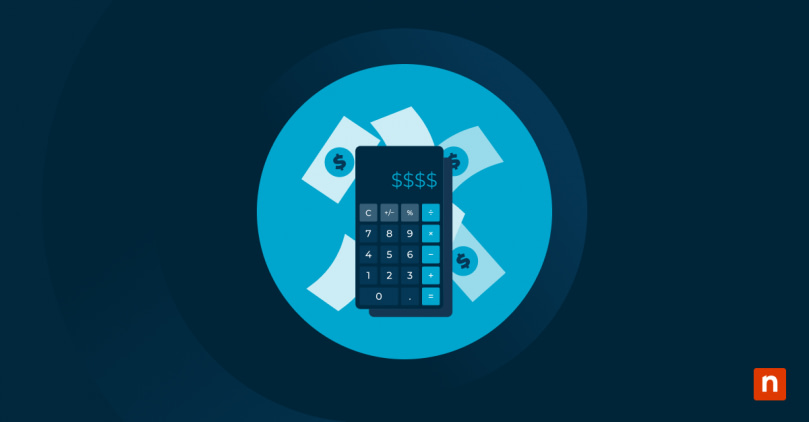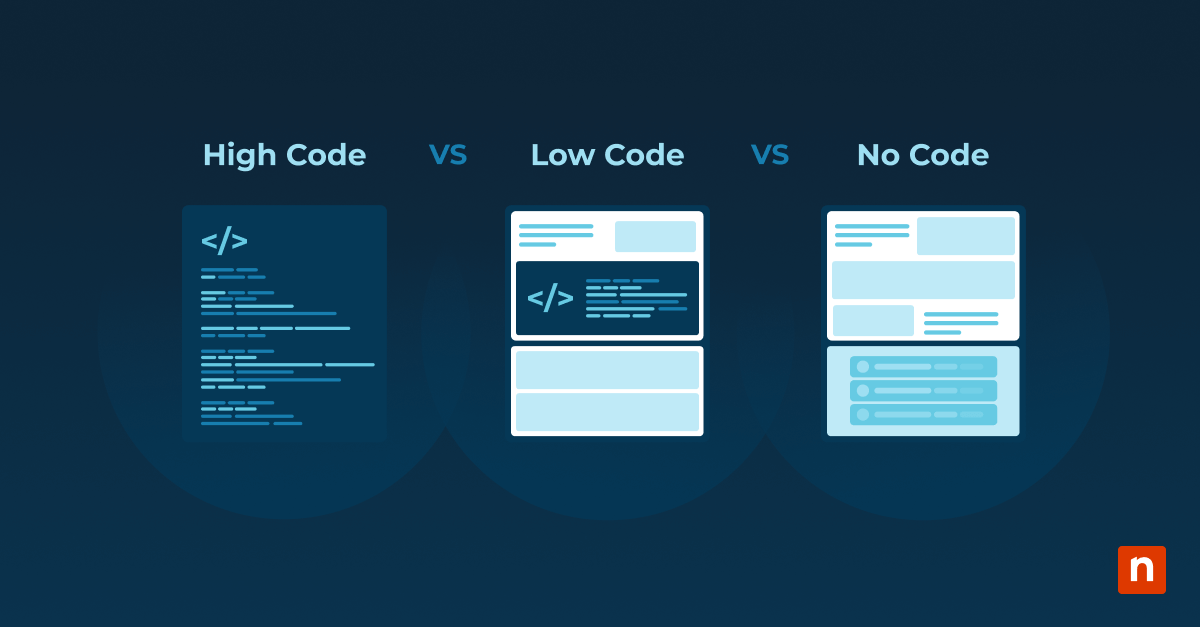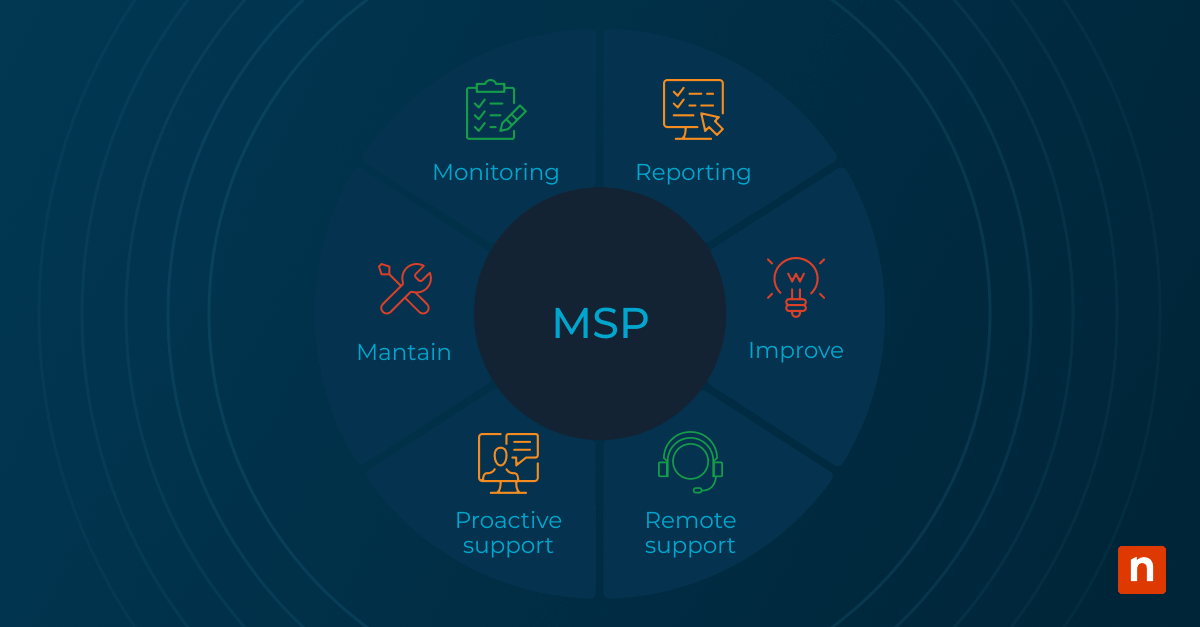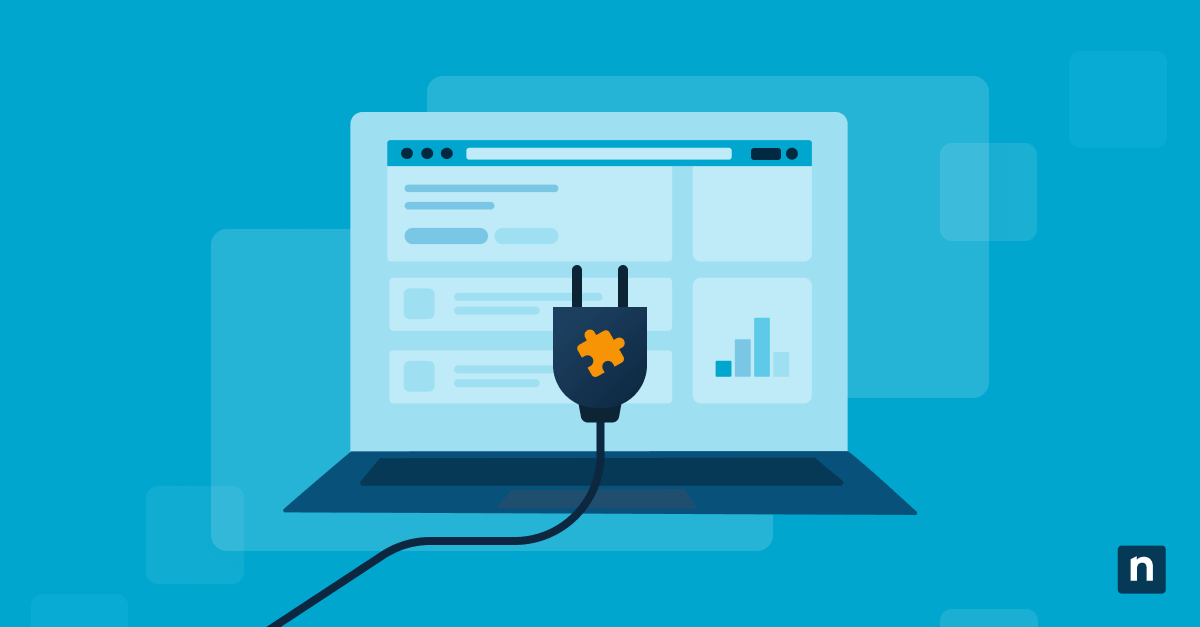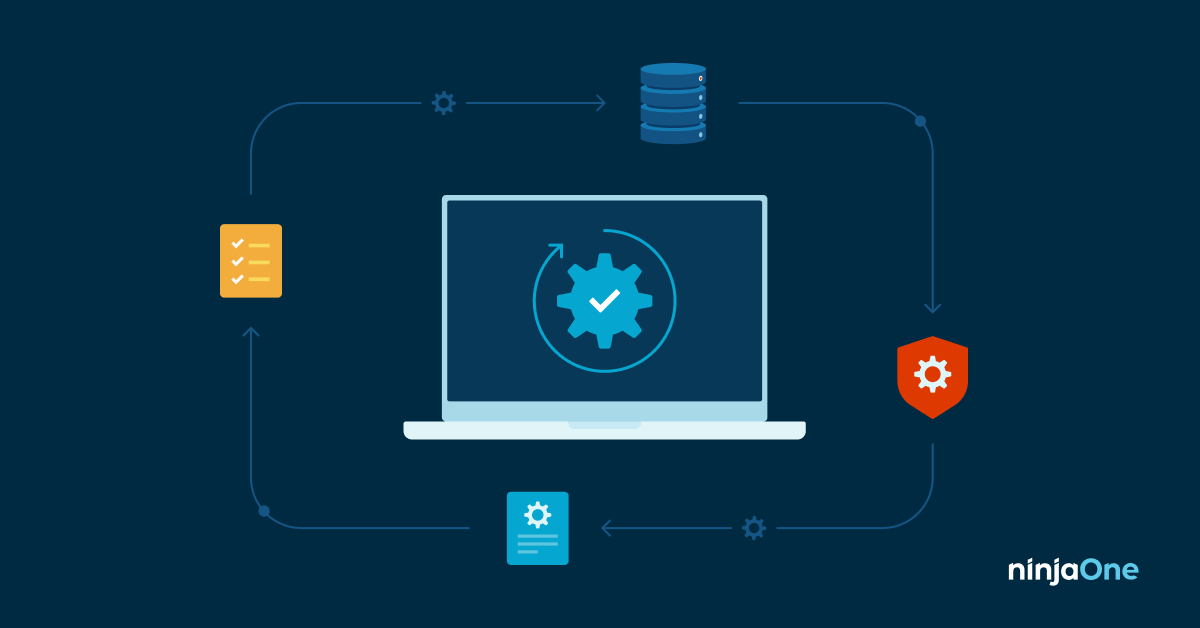MSP pricing is a topic we frequently get questions about. What pricing models should be considered? How much should Managed Service Providers (MSPs) be charging per user? In this post, we’ll answer those questions by digging into how MSPs can make their own calculations using various tools, such as an MSP pricing calculator and sample MSP services template, to ensure their managed services agreements stay profitable over time.
What is an MSP?
Before anything, it’s a good idea to define what an MSP is and how they rely on an RMM platform to become more efficient.
An MSP is an organization that helps manage and deliver various services to another organization, as needed. Typically, these services are remotely provided and offered to different companies. Thus, it is normal for an MSP to have multiple clients across various industries—from healthcare to finance—and offer management services to them.
MSPs use RMM to optimize their business processes. The best RMM tool gives MSP leaders end-to-end visibility of their IT network, detects any changes in their IT environment that can indicate a technical issue so technicians can investigate them, and enables an MSP to proactively patch, back up, and ensure antivirus software is in place.
As an MSP, you need access to the best talents and latest technologies to deliver the most appropriate services to your clients—but this naturally brings the question of, “How much should I charge as an MSP?”
7 MSP pricing model examples
1) Per-device
Per-device is a pricing model that charges a flat fee for each type of device supported by an MSP. Many MSPs choose this model because it’s simple and effective.
2) Per-user
Similar to the per-device model, per-user is also a flat fee. However, instead of per device, it’s per user. Each user is a flat fee, and all the devices a user has are supported by the MSP.
3) Monitoring-only
For this pricing model, MSPs only offer monitoring and alerting services for a part of their client’s IT environment. Businesses who opt for this pricing model from MSPs often want the bare minimum. With this model, MSPs usually charge additional fees for any service other than monitoring and alerting.
4) Value-based
With a value-based MSP pricing model, an MSP will provide all their IT services for a flat fee. Clients who want an MSP to act as a part of their IT team and manage their entire IT infrastructure often choose this option.
5) Tiered
Known as one of the most popular pricing models, the tiered MSP pricing model has groups of services that they offer to clients. For instance, an MSP could have “basic,” “advanced,” or “premium” levels, and each of these tiers/groups offers various services at a flat price to clients, with “basic” being the least expensive and “premium” being the most expensive. This allows clients to upgrade or downgrade services and prices as needed.
6) All-you-can-eat
An all-you-can-eat pricing model is the most flexible pricing option, and it offers remote support, on-site support, and lab or bench time for a flat fee each month. With this option, clients can expect a flat fee each month for the services they need and avoid billing changes.
7) À la carte
With this pricing model, clients can pick and choose the services they need to create a tailored plan. À la carte is the least favorite pricing model for MSPs since it hinders profitability; in fact, the majority of MSPs actively avoid using this model.
What pricing model should an MSP use?
Even with all the right MSP pricing strategies, choosing the right pricing model for your MSP can be challenging, especially since no model is “better” than all the rest. However, some methods are indeed less efficient, such as tiered pricing or per device, but even these methods work for certain MSPs and their business structures.
The main points to keep in mind when pricing MSP services are profitability and efficiency. The method you choose should be profitable and efficient for your MSP, meaning that it works well without creating too much additional work for you or your clients.
→ Get your free download of the MSP Pricing Calculator
How to set your own MSP pricing?
There are several ways to set a successful MSP pricing model. Let’s take a look at some of the most common ones:
1. Do a cost-benefit analysis
A cost-benefit analysis compares the estimated costs (or weaknesses) and benefits (or opportunities) of a specific project (in this case, the setup and maintenance of your MSP). The analysis aims to determine how much you would need to earn to compensate for any possible expense. You can begin by using an MSP pricing calculator to better understand your pricing strategy, including costs, such as training, certifications, and any needed projects for compliance regulations, such as GDPR and HIPAA.
2. Plan for growth
Consider future growth in your MSP pricing strategy, even if you’re a startup. Factor in the needs of your business and those of your customers. In this ever-evolving industry, you maintain your competitive advantage when you can meet the expectations of your clients. This is especially worth noting when you consider that the global market size for managed services is expected to grow at a CAGR of 13.6% from 2023 to 2030, according to Grand View Research.
3. Identify your target audience
Who are you serving? Business leaders often forget to ask this question because they assume everyone needs an MSP. While this is true in a general sense, it can hinder your MSP pricing marketing model. You need to understand the specific needs and expectations of your target market. For example, if you are positioning yourself toward the healthcare sector, it may do you well to research the best HIPAA-compliant cloud backup service and price your services specific to that. This prevents a hodgepodge-type of RMM and helps you deliver better customer service.
4. Stay updated with the latest trends
Technology is always evolving, and your MSP needs to stay ahead of the curve to ensure that you remain relevant. Keeping current with the leading IT trends could impact your MSP business and pricing strategy. It’s a good idea to research available technologies and attend various IT seminars constantly. The beauty of this is that your pricing strategy is not set in stone: Feel free to adapt it as needed and with the proper communication to your existing clients.
5. Look at your competitors
One of the best ways to determine MSP pricing is to check what your competitors are doing. It must be emphasized that you should only analyze your competitor’s services and never fully imitate them. Look at what they are doing, identify any market gaps they have and where your services outshine them, and then base your MSP rates from there.
6. Regularly evaluate your MSP price
Regularly monitor and evaluate your MSP pricing model. Ask your customers for their feedback and take note of any areas for improvement. Compare this with your current IT budget and any historical data you have. Whenever possible, update your pricing structure to maintain your profitability and competitiveness.
Free MSP pricing tools
There are plenty of great resources and free MSP pricing tools that you can use to create prices for your business. For example, NinjaOne offers a free sample Managed Services Agreement template and an MSP pricing calculator that you can use to ensure that you set profitable prices for your services.
What affects the pricing of managed solutions?
- Deployment type and infrastructure. Will you use on-premises infrastructures, a cloud-based model, or a mix of both?
- Organization size. Think about the number of devices and/or users you will need/support and the number and location of sites you will need (if you are offering an on-premises model).
- Licensing fees. Note that licensing fees are directly proportional to how many users you support. Moreover, every organization’s licensing fees may differ because clients have different needs.
- Features. How many out-of-the-box features does your RMM have, and which will be given at an additional cost?
- Team experience. Remember that your team’s experience and expertise will play a significant role in your pricing.
Industry requirements. Some industries have more regulatory compliance requirements, which could affect your MSP pricing model.
7 MSP pricing mistakes (with solutions)
Mistake #1: Offering client-facing tiered pricing
For quite a while, it was common for MSPs to provide clients with different tiers of service offerings. Usually, it was presented as a “bronze, silver, gold” type of choice. The logic was every buyer appreciates having a choice, but the problem with this approach was many clients would simply choose the cheapest option and forego options or services that they actually needed.
Solution
In my MSP, I had tiers of service packages I would apply to different types of clients. I would refer to them internally, but I never presented them as options that my clients, themselves, could choose. The way I thought about it was that my clients were bringing me in to be the expert — I shouldn’t be letting them decide what they need.
Offering prospective clients tiered options can seem like a positive, but ultimately providing them with one clear option can be a lot easier and simplify things for both parties. Prospects will appreciate that there’s one less decision they have to make, and your technicians will appreciate not having to keep up with which client is on which tier.
Bonus: Getting rid of a lower tier can also help you avoid taking on “problem clients” who refuse to pay for what they legitimately need.
All that said, can there sometimes be benefits to offering tiered services? Certainly, but if you’re not realizing those benefits by closing more deals or upselling more clients, then there may be no point clinging to the method.
Mistake #2: Not identifying your minimum profitable contract
Every MSP has a responsibility to themselves: Make sure each client is profitable.
In many cases, however, getting to that point is a prolonged learning experience with a lot of curveballs.
Solution
My recommendation: Use our MSP Pricing Calculator to track and plan expenses — especially labor costs — so that your contracts don’t come back to bite you. For many of today’s MSPs, a deal south of $2,000 – $2,500 MRR isn’t going to be worth it. If the MRR on a deal looks questionable, consider selling block time as an alternative to all-you-can-eat service.
Remember that with the cost calculator, you can use your existing clients as a template. If you have a profitable client who is similar to a prospect, your existing cost calculations can help you plan your agreement and exceed that minimum profitability threshold.
Mistake #3: Not choosing a profitable pricing model
In locking in profitability, many successful MSPs seem to go in the direction of per-user pricing as opposed to per-device pricing. Gone are the days of one device per user. With users having multiple computers, phones, and tablets trying to keep track of devices can be cumbersome. Having a flat rate per user per month it aids in having a mutual understanding with clients of how the contract will increase in price and gives your business the ability to easily track and make billing adjustments.
Solution
Does that mean that per-device can’t work for you? Of course not. As long as you’re ensuring you have a healthy gross profit margin (goal: 70%), you should stick with whatever works for you.
Whichever pricing model you choose, just keep in mind you don’t have to specify to your clients that’s what you’re basing your pricing on. On one hand, it can help make your pricing easier for them to understand, but on the other hand, it opens you up to more potential negotiation and nitpicking. Instead, you can always just provide your flat rate number and have one less thing to pick at.
Mistake #4: Not including an escalation clause in your MSA
Your managed services agreement should include an Escalation Clause that protects you from inflation. This helps keep your MSP profitable year after year and saves you from uncomfortable renegotiations when vendor prices increase.
Solution
Include an Escalation Clause in your managed service agreement. If you’re interested in reading more advice on crafting a profitable MSA see my 2021 Guide to Managed Services Agreements.
Mistake #5: Not ensuring profitability over time
Sometimes a new contract won’t be profitable for several months, because you may need to be very proactive at the beginning to get the network running smoothly. In many cases, that can be acceptable knowing that, in later months, there will be very little maintenance to be done.
Solution
Using the MSP Pricing Calculator can also help you strategize this type of agreement in such a way that you can be sure it’s worth your time investment. By regularly going to the 2nd tab of the calculator, you can compare your profit margins and determine if your labor costs are indeed decreasing over time. If not, or if they’re actually increasing, you can troubleshoot and try to find a solution to course correct.
Mistake #6: Not protecting yourself from cyber liability
These days, it’s certainly wise to consider cyber liability every time you bring on a new client. Increasing cyberattacks against MSPs have only increased the risk that a single vulnerability or mistake can cost you your business.
Solution
There are two great ways to protect yourself from this sort of danger. First, ensure that your company and each of your clients has cyber insurance — in fact, it’s a good idea to include a requirement with specific coverage needs in the contract (for more on cyber insurance, see our MSP Live Chat with techrug founder Justin Reinmuth).
Additionally, you want to make sure you’re providing the level of security the client actually needs, not just what they’re willing to pay for. The dangers of doing this are quickly beginning to outweigh the rewards of haggling your way into a new client.
Mistake #7: Not handling “unlimited” support effectively
Offering unlimited service or troubleshooting is a great way to earn business. In fact, it can be hard to stay competitive in some markets if you don’t offer this.
Solution
The trick to making these kinds of deals without losing your shirt on labor costs is to clearly define the boundaries of your offer in each contract.
Yes, that essentially means putting limits on your “unlimited” service, but you’ll find yourself regretting it if you don’t.
→ Get your free download of the MSP Pricing Calculator
In closing: Stay laser-focused on profitability
Profitability is not so much a destination as it’s a moving target. Overhead changes, market demands change, and customers change. While there’s no single methodology for pricing that’s guaranteed to work for every MSP, there’s one truth that applies to everyone: you have to continuously optimize your pricing model and your agreements if you want to stay competitive.
Our pricing calculator can help you do that by taking much of the guesswork out of the process. Just like how NinjaOne can help your business thrive by taking the guesswork out of client management, time tracking, and support ticketing. Learn more and start a free trial today.
Frequently Asked Questions (FAQs)
1. What is MSP pricing?
MSP pricing is the different financial strategies you can use to price the services of your organization. As seen in this guide, there are many factors to consider when finding the right model for you.
2. What is the best MSP billing system?
While every organization is different, over 20,000 customers worldwide trust NinjaOne because of its pay-per-device pricing model that is billed every month. This allows them to only pay for what they need every billing cycle.
NinjaOne’s IT management software has no forced commitments and no hidden fees. If you’re ready, request a free quote, sign up for a 14-day free trial, or watch a demo.

